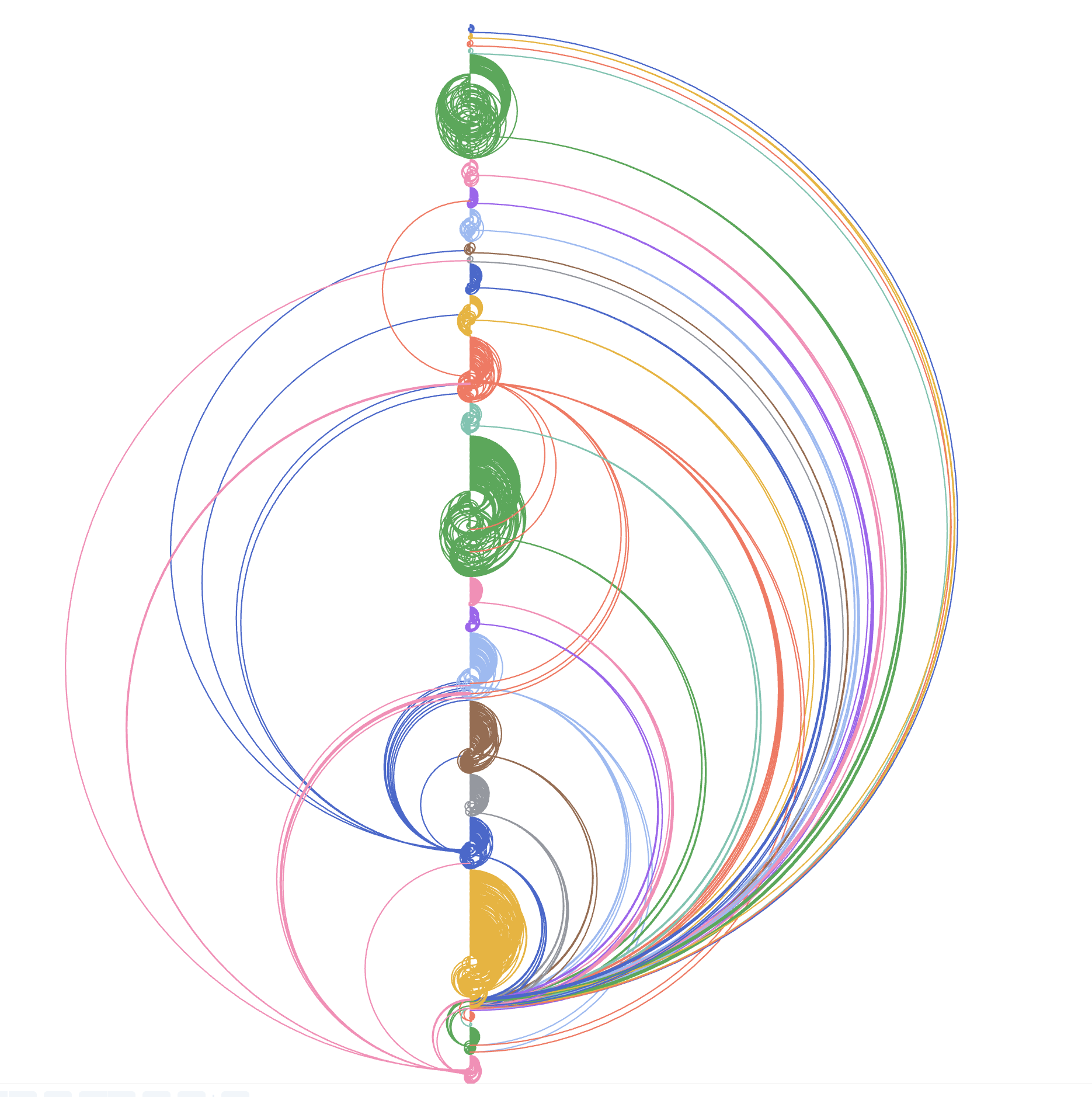✉️ Not subscribed yet? Subscribe to the Newsletter
Future of Coding Weekly 2025/07 Week 1
2025-07-07 17:11
🎨 Paint: a timeline ↔️ Code⇄GUI bidirectional editing via LSP 🧫 Live, navigable & interactive visualization of the Observable runtime graph
Share Your Work
🗨️ Tom Larkworthy: 🧫 cellMap
Finished my live, navigable and interactive visualization of the Observable runtime graph. Works on both Observable and Lopecode.
- live: if you add/remove a cell the visualisation update.
- navigable: if you click a cell you are taken to the cell source (on observable this opens a new tab and scrolls to the cell)
- interactive: as you scroll though birds eye view the detailed visualization expands the dependancies of the focused cell. You can click to pin the current cell.
The overall point of this notebook is to provoke the reader into understanding the programming model and ask questions like "what is a viewof" when they try to understand the dependancy graph. Its also useful for authors to find stray dependancies and plan refactors on complex notebook networks.
computes the mapping of reactive variables to higher level notebook cells, grouped by module cellMap cellMap function You can call it with zero args to default to the current runtime, or pass in a subset of variables to extract the cell structure from just those. Visualizations visualize the cell ordering testing low-level variables in this module Utilities

DevLog Together
🗨️ Tom Larkworthy: 🎥 edit menu
Been working on trying to help the reader understand the computational graph a bit more. Also trying to improve the UX a bit. Now the dependancies are show under each cell, but the edit menu has to be enabled first so its less annoying if you are jsut reading. Clicking the links take you to the cell. Thanks Konrad Hinsen for the push 🙂 . WIP coz it does not link across module imports yet, or built in functions.
🗨️ Tom Larkworthy:
Trying to help map the cell structure of a reactive runtime. WIP this is overwhelming but it looks pretty. The clumps are modules. The concentrated rainbow arc is pointing at the stdlib. It does communicate the intense collaberation inside a module and the sparse connections between modules though.

Thinking Together
🗨️ Oleksandr Kryvonos: https://natto.dev/
can someone remind me there is a project that was shared here, a canvas for JS workflows... ? found it - https://natto.dev/
🗨️ When Leggett:
So obviously ignore this discussion prompt if it seems dumb or out of scope. Its maybe not as "direct" a connection to the future of coding.
Lately I've been finding myself wondering more and more often what kinds of agents might be sneaking into different spaces and for what different purposes. On places like reddit, instagram, or bluesky, we know that there are plenty of bots engagement farming or pushing misinformation or advertising or simply acting as fake followers to boost accounts. However, we know that bots/fake accounts are also a common vector for scraping, as it can bypass rate limiting or private areas like this slack.
In the last several years, as social media platforms have become enshittified, and the average user has felt less inclined to post, and started spending more time in messaging and group chat spaces like whatsapp, discord, signal, slack etc. In small group spaces, like a personal friend group, you obviously wouldn't have a bot sneak in, but a group chat like this one has thousands of members and it likely would be easy for a bot to get in. Who knows, there may be one or more here now.
So here are my questions: - do you think there are bots here? - If so, does it bother you? Do you feel like you want to preserve human discussion spaces from spying, interference, scraping, or being trained on? - Do we need to consider more deeply how the future of computing will be affected by so many non-human users including many malicious actors? - Do we need an improvement at the infrastructure/ecosystem level to securely/practically enable the kind of end-user programming that is commonly discussed here? To own your connections/contacts/community. To have better protocols/standards/etc for communication. Are we really stuck on email as the only really open mainstream communication standard?
Linking Together
🗨️ Ivan Reese: 🎨 Paint: a timeline
A beautiful virtual museum of digital painting programs throughout the history of computing, from the 60s through the 90s (via Patrick Dubroy) — Paint: a timeline
🗨️ Jasmine Otto:
📝 Code⇄GUI bidirectional editing via LSP
x-posting James Vaughan (via redblobgames):
Intriguing: live editing usually lets you edit some value in the browser or running app, but with an "LSP server" you can have it work with your existing text editor to edit in the original environment
📝 Code⇄GUI bidirectional editing via LSP
I built a small proof-of-concept for a system that enables real-time bidirectional editing between any modern code editor and a GUI, enabled by an LSP1 server. Code-based CAD I like working on small projects at home that benefit from CAD. I’m also a programmer with a personal development environment that I’ve spent years making as cozy as possible. Naturally I’ve been interested in finding code-based CAD system to use for my projects that allows me to use that cozy development environment.
Present Company
🗨️ Andrew F:
Does anyone know of a nice accessible survey of the state of reactive programming today, ideally with a focus on the different flavors/features and what kind of patterns they enable?
👨🏽💻 By 🐘 @[email protected] 🐦 @warianoguerra
💬 Not a member yet? Check the Future of Coding Community
✉️ Not subscribed yet? Subscribe to the Newsletter / Archive / RSS
🎙️ Prefer podcasts? check the Future of Coding Podcast